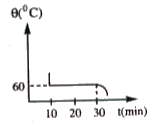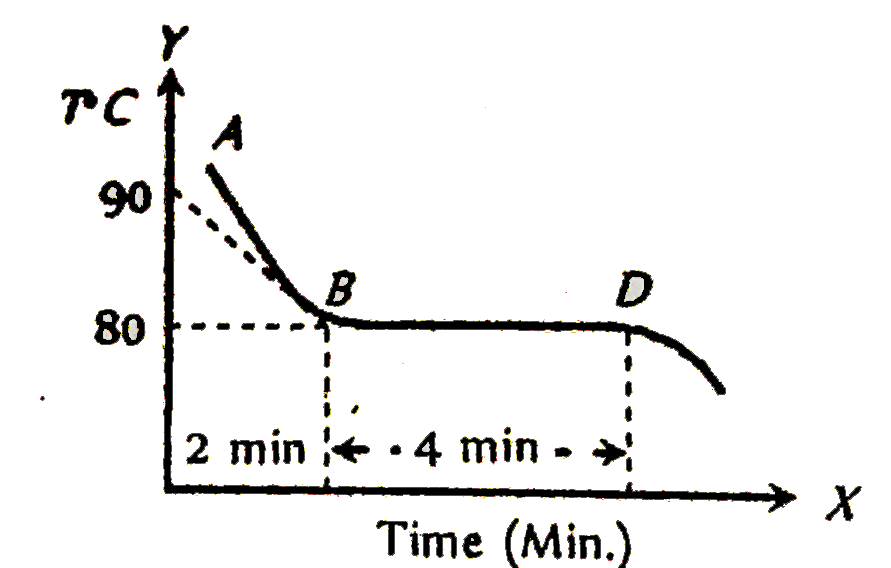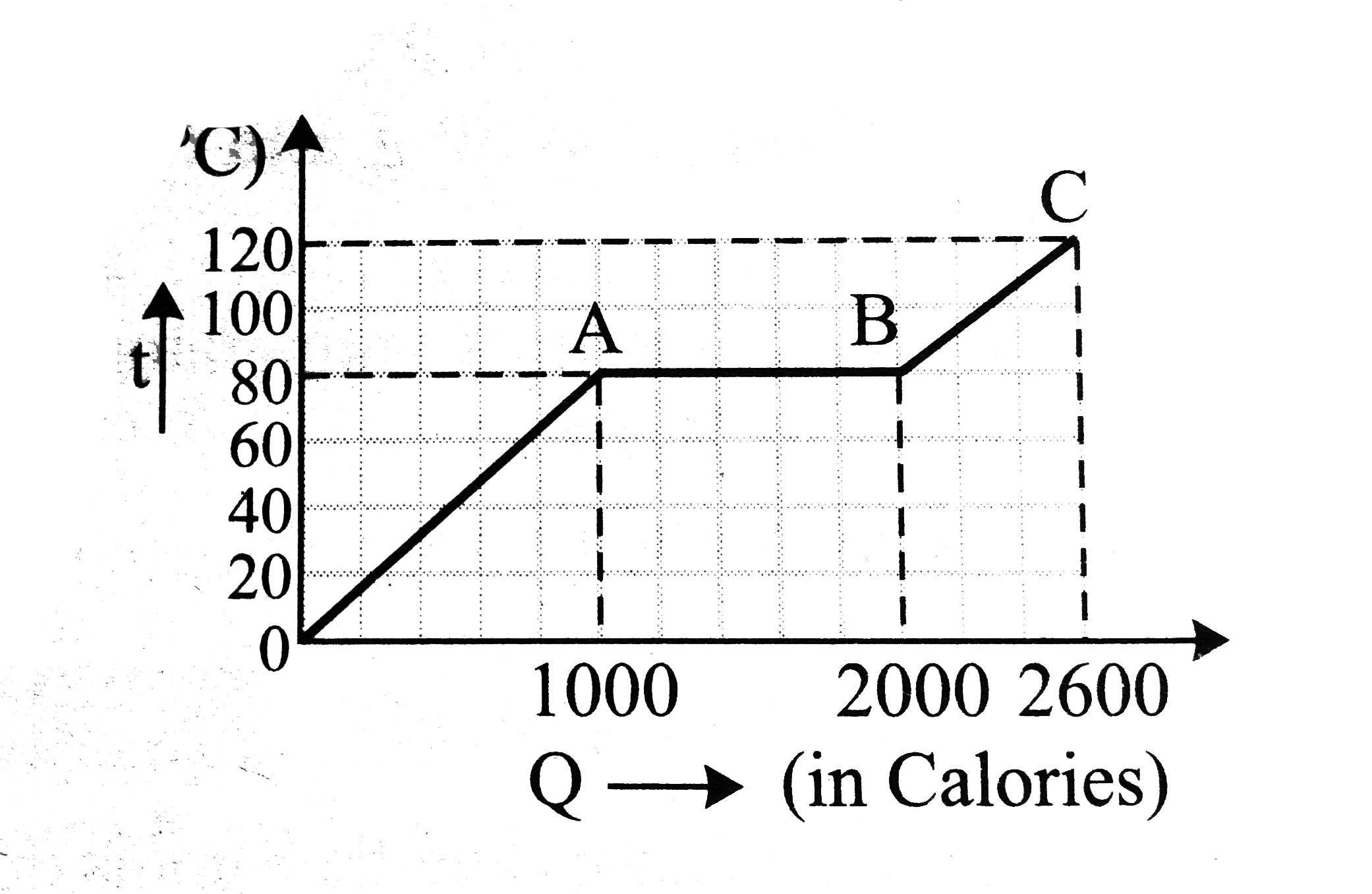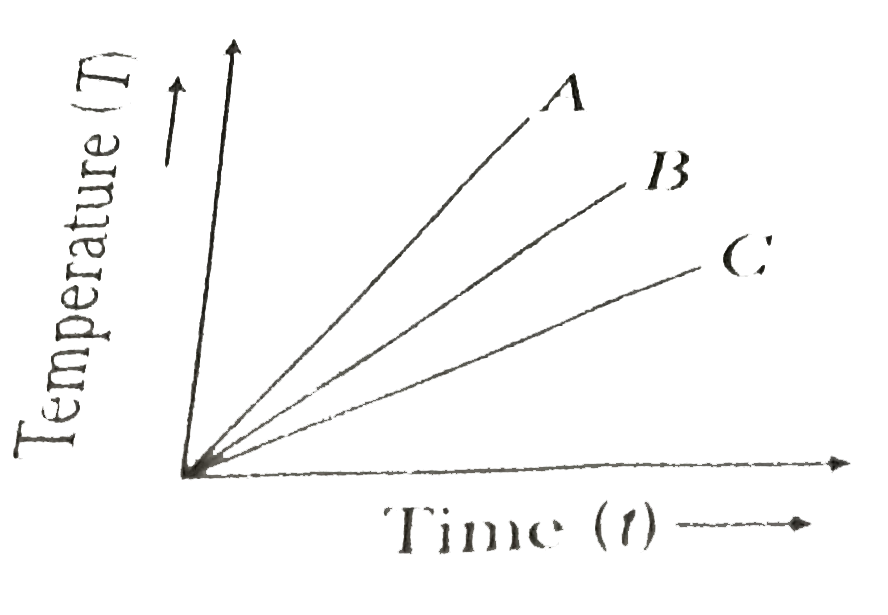The figure on right shows a cooling curve for a substance which, .c) starting as a liquid, eventually solidifies. The specific heat capacity of the liquid is Jkg K. The rate of temperature drop just before solidification at is 5 k/min. The latent fusion of the substance is

J/kg
J/kg
J/kg
J/kg
The correct Answer is:C
Topper's Solved these Questions
- CALORIMETRY BOOK - AAKASH SERIESCHAPTER - CALORIMETRY EXERCISE - ADDITIONAL PRACTICE EXERCISE (LEVEL - II) (LECTURE SHEET (ADVANCED)(More than one correct answer Type Questions )
10 Videos
- CALORIMETRY BOOK - AAKASH SERIESCHAPTER - CALORIMETRY EXERCISE - ADDITIONAL PRACTICE EXERCISE (LEVEL - II) (LECTURE SHEET (ADVANCED)(Linked Comprehension Type Questions)
9 Videos
- CALORIMETRY BOOK - AAKASH SERIESCHAPTER - CALORIMETRY EXERCISE - PRACTICE SHEET (LEVEL - II Integer Type Qustions Type Questions)
4 Videos
- APPENDICES BOOK - AAKASH SERIESCHAPTER - APPENDICES EXERCISE - GRAVITATION (EARTH SATELLITES AND ESCAPE SPEED)
35 Videos
- CENTRE OF MASSBOOK - AAKASH SERIESCHAPTER - CENTRE OF MASSEXERCISE - ADDITIONAL PRACTICE EXERCISE (PRACTICE SHEET (ADVANCED))
3 Videos
Similar Questions
A substance initially in solid state at 0∘C is heated. The graph showing the variation in temperature with the amount of heat supplied is shown in Fig. 11.7. If the specific heat capacity of the solid substance is 500 J kg−1^∘C−1, use graph to find : (i) the mass of the substance, and (ii) the specific latent heat of fusion of the substance in the liquid state.
View SolutionThe figure given below shows the cooling curve of pure wax material after heating. It cools from A to B and solidifies along BD . If L and C are respective values of latent heat and the specific heat of the liquid wax, the ratio L / C is

View Solution
Knowledge Check
The figure given below shows the cooling curve of pure wax material after heating. It cools from A to B and solidifies along BD . If L and C are respective values of latent heat and the specific heat of the liquid wax, the ratio L / C is
 A40B80C100D20
A40B80C100D20A liquid A of specific heat 0.5 at 60∘C is mixed with another liquid B of specific heat 0.3 at 20∘C. After mixing, the resultant temperature of the mixture is 30∘C. The ratio of masses of A and B respectively is
A1:2B1:3C1:5D2:3If 0.5calg−1C−1 is the specific heat capacity of a substance of mass 50 g, calculate the amount of heat energy required to change the temperature of a substance from −5∘C to 10∘C
A250 calB125 calC375 calD500 cal
A calorimeter of water equivalent 10×10−3kg is filled with 70×10−3kg of a substance at its melting point. The substance is found to solidify completely in 21 minutes. A similar calorimeter containing 80×10−3kg of water at the same temperature cools at the rate of 1.5∘C per minute, the room temperature being the same in both cases. What is the latent heat of fusioin of the substance? (Specific heat capacity of water =4200Jkg−1K−1)
View Solution
A substance is in the solid form at 0∘C. The amount of heat added to this substance and its temperature are plotted in the following graph. If the relative specific heat capacity of the solid substance is 0.5, find from the graph (i) the mass of the substance, (ii) the specific latent heat of the melting process and (ii) the specific heat of the substance in the liquid state.
Specific heat capacity of water =1000cal/kg/K
View Solution
A substance is in the solid form at 0∘C. The amount of heat added to this substance and its temperature are plotted in the following graph. If the relative specific heat capacity of the solid substance is 0.5, find from the graph (i) the mass of the substance, (ii) the specific latent heat of the melting process and (ii) the specific heat of the substance in the liquid state.
Specific heat capacity of water =1000cal/kg/K
View SolutionThe temperatures versus time graph is shown in figure. Which of the substance A,B and C has the lowest heat capacity if heat is supplied to all of them at equal rates.

View SolutionThe temperatures versus time graph is shown in figure. Which of the substance A,B and C has the lowest heat capacity if heat is supplied to all of them at equal rates.

View Solution
